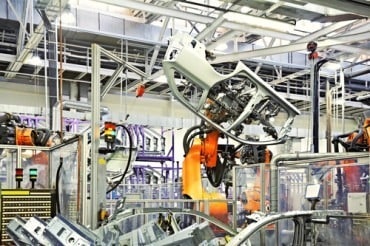
When implementing RPA, the biggest challenges involve development and infrastructural issues.
Businesses of all types have numerous workflow tasks that require the ingestion of data streams, an analysis of that content, and an action to be taken based on the analysis. Continuous intelligence could be used in cases where the analysis must be done in real-time and decisions made in milliseconds to seconds. Many other cases have less stringent time frames for the data analysis and time to action. In all cases, robotic process automation (RPA) is making gains to speed routine tasks and augment the work done by humans so they may contribute greater value to the company in other ways.
See also: Are You Getting the Best Results from RPA?
Which tasks should be automated?
The first step in implementing RPA is identifying tasks that lend themselves to automation. There are some common characteristics to look for even though RPA application areas cut across broad swaths of organizations. Specifically, IBM notes that an “RPA-ready” application is one that is:
- Simple, consistent, and repeatable
- Repetitive low-skill tasks that create human issues such as high error rates and low worker morale
- Existing or planned processes where stripping off routine tasks can free humans and deliver significant productivity, efficiency, or cost benefits
- Tasks that offer meaningful opportunities to improve customer and worker experiences by speeding up existing processes
Some tasks may meet many of these criteria but still not be suitable for RPA. For example, a task may meet every criterion, but if the task requires additional data capture capabilities or a redesign of the process, RPA may not be the right fit.
RPA can be applied to a very broad range of tasks across most industries. Some of the top areas common to most businesses that are ripe for RPA include customer service, employee onboarding, data extraction from forms, processing of orders and claims, procurement, and more.
Additionally, there are many industry-specific tasks that can benefit from RPA. Examples include:
- Loan processing and trade execution in financial services
- Claims and appeals processing in insurance
- Supply chain management and automated returns in retail
- Logistics, bill of materials creation, and report generation in manufacturing.
Fundamental considerations for RPA
When implementing RPA, the biggest challenges involve development and infrastructural issues. The plethora of articles touting the benefits of RPA are forcing many companies to adopt the technology quickly. As is the case with any rushed effort, the pressure to deliver results can lead to disaster.
There are three basic development and deployment approaches that can be used. Businesses have the choice to:
Write RPA code from scratch: The benefit of this approach is that a company owns the code and can control everything. A point to consider is that code development can be time-consuming and labor-intensive. And a company may not have the internal expertise to develop such applications.
Buy point solutions or packages applications: Such an approach can speed the time to value since the solutions already exist. Another benefit is that there are numerous vendors offering RPA solutions today. On the surface, the abundance of off-the-shelf RPA tools seems like a blessing. The downside (as is the case with any purchased solution for any field) is that there is not much flexibility. If the solution does not do the exact job a company wants, the company is at the mercy of the vendor for enhancements or updates. Additionally, RPA tools may be difficult to integrate with internal systems or processes. And tools from different vendors may not work well together.
Select an all-in-one automation platform: An automation platform typically includes an integrated set of foundational applications and cross-platform capabilities. Normally, such platforms let companies customize any automation solution. The limitation of this approach is that a company is depended on a single vendor. If a best-of-breed third-party RPA tool is available, a company would most likely not be able to integrate into the platform. (Or the integration would take a great amount of custom work to get the different solutions working together.)
Selling RPA to Workers
One final aspect to consider with implementing RPA is the impact it will have on workers. Overcoming technical obstacles to RPA implementation is not enough. Ignoring worker resentment against RPA can be an obstacle to RPA deployment, acceptance, or use.
Some workers may feel threatened that RPA will replace them completely or reduce the hours a company requires them to work. Successful companies use RPA to complement human tasks. When deployed properly, RPA becomes a source of opportunity both for the business and its workforce for several reasons, including
- RPA replaces human tasks, not humans
- It’s assistive, taking over highly repetitive tasks and helping workers do their jobs better
- Worker knowledge becomes more valuable because they now have the time to apply it to benefit the business and its customers
- RPA can help achieve gains in accuracy and TCO.
Summary
RPA is here and is gaining popularity in businesses today. Misconceptions about what RPA can do can create unrealistic expectations. Automating a suitably selected task with the right RPA solution can deliver significant operational efficiencies and free up workers to perform more challenging tasks that deliver greater value to the business.
The best way to proceed with an RPA initiative is to identify appropriate tasks for automation, pick a solution that performs the task without vendor lock, and to persuade workers to not fear automation, but share with them how RPA can alleviate tedious jobs and let them use their time and knowledge for more satisfying work.





























